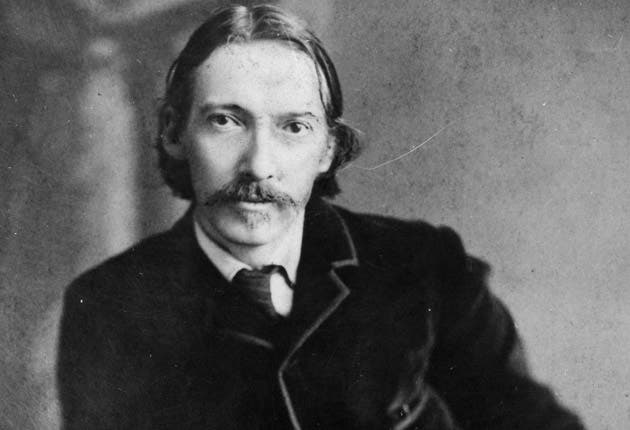The war on the floor
H. G. Wells: gaming pioneer.
H.G. Wells left quite a mark. He destroyed civilisation half a dozen times. He infested Woking with Martians. He took us to the end of time and back again. He pretty much co-founded science fiction as a genre. That stuff is well-known, but I hadn't been aware that he also invented the 4X strategy game. Here he is describing its exploration phase.
In this game the floor is the sea [...] There are altogether four islands, two to the reader's right and two to the left, and the nearer ones are the more northerly; it is as many as we could get into the camera. The northern island to the right is most advanced in civilization, and is chiefly temple. That temple has a flat roof, diversified by domes made of half Easter eggs and cardboard cones.
That's from a book called Floor Games; a guide on how to build things, interesting things, on the nursery floor, as an imaginative space to explore. Here's an archipelago he made with his kids, and an idea of how they explored it.
The ships are built out of our wooden bricks on flat keels made of two wooden pieces of 9 x 4-1/2; inches, which are very convenient to push about over the floor. Captain G. P. W. is steaming into the bay between the eastern and western islands. He carries heavy guns, his ship bristles with an extremely aggressive soldiery, who appear to be blazing away for the mere love of the thing. (I suspect him of Imperialist intentions.) Captain F. R. W. is apparently at anchor between his northern and southern islands. His ship is of a slightly more pacific type. I note on his deck a lady and a gentleman (of German origin) with a bag, two of our all too rare civilians. No doubt the bag contains samples and a small conversation dictionary. (I think F. R. W. may turn out to be a Liberal.) Perhaps he will sail on and rescue the raided huts, perhaps he will land and build a jetty, and begin mining among the rocks to fill his hold with silver. Perhaps the natives will kill and eat the gentleman with the bag. All that is for Captain F. R. W. to decide.

That's right: H.G. Wells, the (co-)father of science fiction, got down on his hands and his knees with his children and built islands full of imaginary civilisations, with green carpet as the sea. Then they'd send their avatars in to explore the islands. Then he wrote a book about it. An eerily prophetic book:
Some day, perhaps, I will [...] tell of battles and campaigns and strategy and tactics. But this time I set out merely to tell of the ordinary joys of playing with the floor, and to gird improvingly and usefully at toymakers.
He invented the Let's Play.
...of our railways, let me merely remark here that we have always insisted upon one uniform gauge and everything we buy fits into and develops our existing railway system. Nothing is more indicative of the wambling sort of parent and a coterie of witless, worthless uncles than a heap of railway toys of different gauges and natures in the children's playroom.
He understood the importance of open standards in hardware compatibility!

Anyway, if you've ever played Civilisation, or Cities: Skylines, or any of dozens of other top-down games - ones with very different mechanics and intentions - then, I suspect, something about Wells' enthusiasm will sound familiar to you.
That said, you could argue - you could very reasonably argue - that it's not exactly a game in our sense. There are no rules; it's more like a giant freeform tabletop roleplaying game, except that it's under a table. This is true; but he made up for that when he also invented turn-based wargaming.
This is from another book he published in 1913, Little Wars. (Its subtitle is "A Game for Boys from twelve years of age to one hundred and fifty and for that more intelligent sort of girl who likes boys' games and books". SORRY. It was 1913, and women wouldn't even have the vote for another five years. But it's interesting to see that at gaming's birth, it wasn't just for kids.) He points out that there have been games played with toy soldiers for centuries; but, he announces, we've entered a new era with the invention of the spring breechloader gun - an elegant little toy that you can pop a matchstick into, and use to topple a toy soldier nine metres away 'nine times out of ten'. Here's his origin story:
The present writer had been lunching with a friend-let me veil his identity under the initials J. K. J.-in a room littered with the irrepressible debris of a small boy's pleasures. On a table near our own stood four or five soldiers and one of these guns. Mr J. K. J., his more urgent needs satisfied and the coffee imminent, drew a chair to this little table, sat down, examined the gun discreetly, loaded it warily, aimed, and hit his man. Thereupon he boasted of the deed, and issued challenges that were accepted with avidity....

That J.K.J? that's actually Jerome K Jerome. H.G. Wells and Jerome K Jerome invented an unprecedentedly sophisticated form of turn-based wargaming together.
To Mr W. was broached the idea: "I believe that if one set up a few obstacles on the floor, volumes of the British Encyclopedia and so forth, to make a Country, and moved these soldiers and guns about, one could have rather a good game [...] Overhead was the day nursery, with a wide extent of smooth cork carpet (the natural terrain of toy soldiers), a large box of bricks-such as I have described in Floor Games-and certain large inch-thick boards. [...]It was an easy task for the head of the household to evict his offspring, annex these advantages, and set about planning a more realistic country. (I forget what became of the children.)
It's always the children who suffer most in war.
The thick boards were piled up one upon another to form hills; holes were bored in them, into which twigs of various shrubs were stuck to represent trees; houses and sheds (solid and compact piles of from three to six or seven inches high, and broad in proportion) and walls were made with the bricks; ponds and swamps and rivers, with fords and so forth indicated, were chalked out on the floor -
I'll cut off H.G. there; he gets very excited about all their innovations, and we have miniatures wargaming and big plastic castles and 3D printing now. But here he is again, enthusing about moving the game outside, into the garden:
The toy soldiers stand quite well on closely mown grass, but the long-range gun-fire becomes a little uncertain if there is any breeze. It gives a greater freedom of movement and allows the players to lie down more comfortably when firing, to increase, and even double, the moves of the indoor game. One can mark out high roads and streams with an ordinary lawn-tennis marker, mountains and rocks of stones, and woods and forests of twigs are easily arranged.
He published the rules of Little Wars in 1913. But he wasn't inspired by the idea of the rules. He was inspired by the idea of building a model landscape, dinky and fragile enough for his wife to swoosh over with her skirt by mistake. He felt the itch.
I felt the itch, too, when I read about the toy captains on their way to the imaginary islands. How about you? How about when you looked at this?

Or this?

Or, perhaps, this?

The itch: it's the delight of seeing a thing that looks like another thing, but small enough to cup in your hand. It's the same thing you feel looking down from an aeroplane at a rumple of mountains. It's the sense you have of being able to cross the map in a single stride, to explore what's in that enticing off-map fog. Fun though it is, in Civilisation, to roll into Rome with your armies, it's not the point. The point is the unfurling of the map, lit and speckled with cities.
If that's so, if that's what drove Wells, then why did he put so much effort into managing the murder of all those toy soldiers? He claimed that his game was an argument for pacifism:
Great War is at present, I am convinced, not only the most expensive game in the universe, but it is a game out of all proportion. Not only are the masses of men and material and suffering and inconvenience too monstrously big for reason, but-the available heads we have for it, are too small. That, I think, is the most pacific realisation conceivable, and Little War brings you to it as nothing else but Great War can do.
...which is lovely, and I don't believe a word of it. Really, H.G.? We play wargames so we can experience a moral education that turns us into advanced pacifists? I think it's much simpler. Little mens are as enticing as little towns. We don't have to fight over our imaginary worlds to enjoy them - city sims shows us that much - but combat has all those qualities which suit it as a basis for game design - strong theme, resource management, jeopardy, competition, yadda yadda. It's inevitable we use these places as battlefields.
Here's H.G., once more, on what he thinks the value of floor games is.
'...not only keeping boys and girls happy for days together, but building up a framework of spacious and inspiring ideas in them for after life.'
That's as good a manifesto for the joy of gaming as ever I've seen. First, they're fun - that's, like, the point - but second, spacious and inspiring ideas. Miniature worlds leave space for your imagination. We look at a jumble of red-and-grey painted polystyrene blocks - or a tangle of pixels on the screen - and it's really nothing like a volcano. But if we're engaged in thinking about that non-place as a real-place, it can be nothing but a volcano. Game-worlds are gymnasia for the imagination.
Last word from the Father of Science Fiction. Take it away, H.G:
Now, sometimes [a toy engine's exterior is damaged] - the funnel bent, the body twisted. You remove the things and, behold! you have bare clockwork on wheels, an apparatus of almost malignant energy, soul without body, a kind of metallic rage. This it was that our junior member instantly knew for a 'lectric, and loved from the moment of its stripping.
I have, by the by, known a very serviceable little 'lectric made out of a clockwork mouse.
Adorbs.

